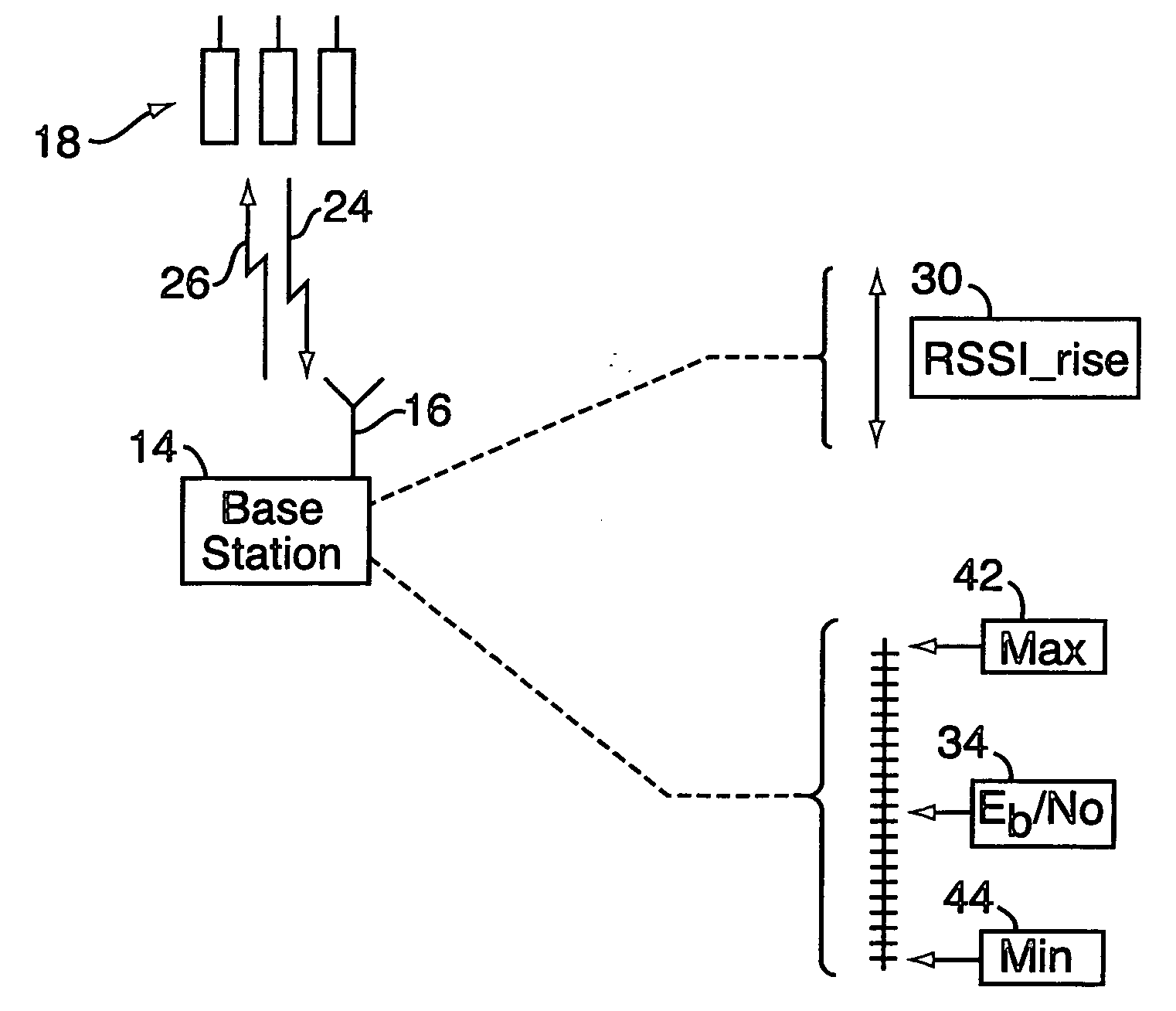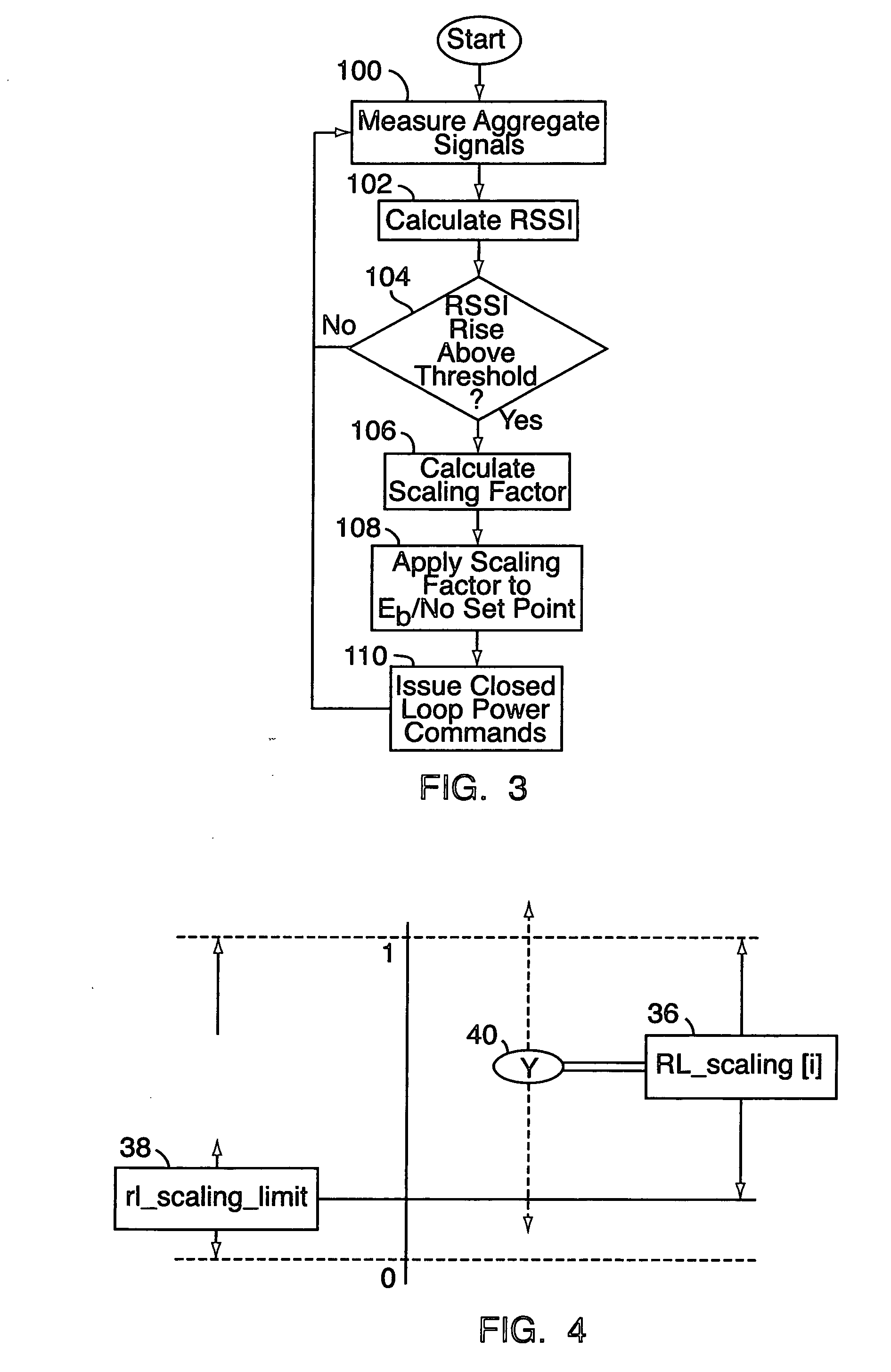Method for extracting optimal reverse link capacity by scaling reverse link Eb/No setpoint based on aggregate channel load and condition
a reverse link and capacity extraction technology, applied in power management, electrical equipment, radio transmission, etc., can solve the problem of unnecessarily limited reverse link capacity, and achieve the effect of increasing capacity and lowering the transmit power level of mobile stations
- Summary
- Abstract
- Description
- Claims
- Application Information
AI Technical Summary
Benefits of technology
Problems solved by technology
Method used
Image
Examples
Embodiment Construction
[0014] Referring to FIGS. 2-6, an embodiment of the present invention relates to a method for extracting the optimal capacity in a cellular network reverse link, by controlling the reverse link Eb / No setpoint based on the aggregate reverse link load and channel conditions. The cellular network includes one or more base stations 14 that wirelessly communicate with a number of mobile stations 18 over a reverse link 24 (i.e., mobile station to base station link) and a forward link 26 (i.e., base station to mobile station link) according to a CDMA or other communications protocol. The base station 14 determines if the reverse link 24 has reached a predetermined level of loading. For doing so, the base station 14 may first calculate a received signal strength indicator (“RSSI”) 30, and then determine if the RSSI 30 has risen above a designated threshold level. If the reverse link 24 has reached the predetermined level of loading, e.g., if the RSSI has risen above the designated threshold...
PUM
 Login to View More
Login to View More Abstract
Description
Claims
Application Information
 Login to View More
Login to View More - R&D
- Intellectual Property
- Life Sciences
- Materials
- Tech Scout
- Unparalleled Data Quality
- Higher Quality Content
- 60% Fewer Hallucinations
Browse by: Latest US Patents, China's latest patents, Technical Efficacy Thesaurus, Application Domain, Technology Topic, Popular Technical Reports.
© 2025 PatSnap. All rights reserved.Legal|Privacy policy|Modern Slavery Act Transparency Statement|Sitemap|About US| Contact US: help@patsnap.com



